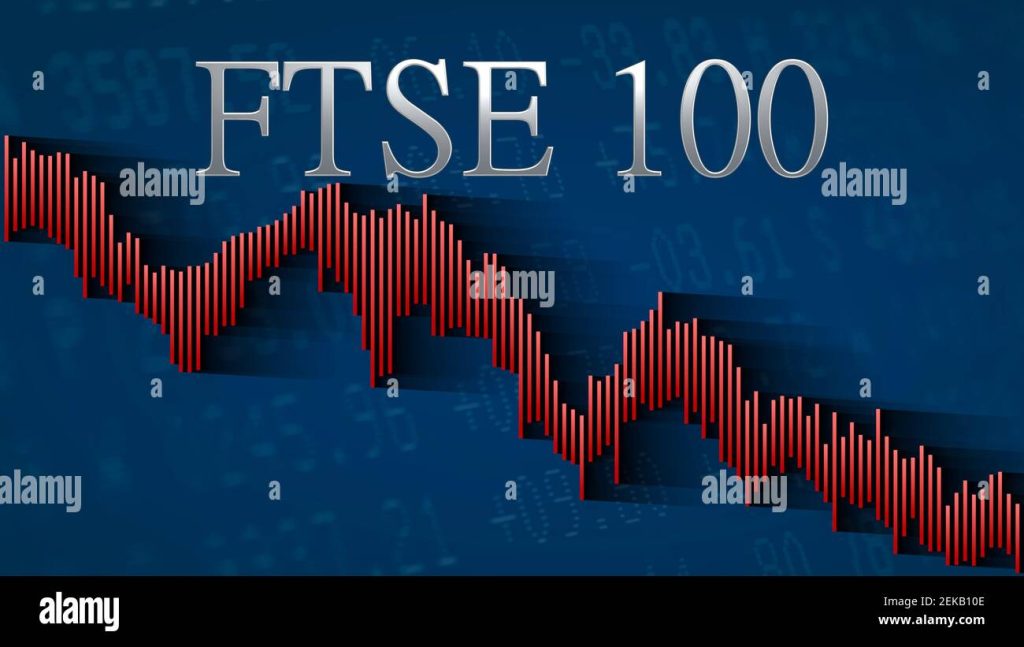Unlocking Wealth: A Comprehensive Guide to Understanding the FTSE 100 Index

The FTSE 100 Index, often hailed as the heartbeat of the London Stock Exchange, is more than just a collection of numbers; it’s a gateway to understanding the dynamics of the UK economy. As one of the world’s leading stock market indices, the FTSE 100 represents the top 100 companies listed on the London Stock Exchange, encompassing a diverse array of sectors, from finance to technology. In this comprehensive guide, we’ll decode what the FTSE 100 Index truly signifies, how it operates, and why it matters for investors and enthusiasts alike. Whether you’re looking to diversify your portfolio or simply want to stay informed about the market trends shaping wealth creation, this guide will provide you with essential insights and practical information. Join us as we unlock the wealth potential that lies within the FTSE 100, empowering you with knowledge to navigate the ever-evolving financial landscape.
History and Evolution of the FTSE 100
The FTSE 100 is a benchmark index that represents the 100 largest companies listed on the London Stock Exchange. Launched in 1984, it has evolved to reflect the changing economic landscape of the UK. Over the years, the index has seen significant changes in its composition, with companies from various sectors joining and leaving. This evolution ensures that the FTSE 100 remains a relevant and accurate representation of the UK’s economic health.
How the FTSE 100 is Calculated
The FTSE 100 is calculated using a market capitalization-weighted method. This means that the value of each company in the index is based on its market capitalization, which is the total value of its outstanding shares. The index is adjusted regularly to account for changes in market capitalization, stock splits, and other corporate actions. This ensures that the index remains a fair and accurate reflection of the market.
Key Components of the FTSE 100
The FTSE 100 includes companies from a wide range of sectors, such as financial services, consumer goods, and mining. Some of the well-known companies in the index include HSBC, British American Tobacco, and AstraZeneca. The composition of the index is reviewed quarterly to ensure it reflects the current state of the UK economy.
Importance of the FTSE 100 in the UK Economy
The FTSE 100 is a crucial indicator of the UK’s economic health. It provides investors with a snapshot of the performance of the largest companies in the country. The index also serves as a benchmark for investment funds and is widely used by investors to gauge market trends. Additionally, the FTSE 100 plays a significant role in shaping investor sentiment and influencing economic policies.
Investing in FTSE 100 Companies: Pros and Cons
Investing in FTSE 100 companies offers several advantages:
1. Diversification: The index includes companies from various sectors, reducing the risk of exposure to a single industry.
2. Stability: Many FTSE 100 companies are well-established and offer stable returns.
3. Dividends: Many companies in the index pay regular dividends, providing a steady income stream.
However, there are also some drawbacks:
1. Market Volatility: The index can be affected by global economic conditions and market fluctuations.
2. Limited Growth Potential: Some FTSE 100 companies may not offer the same growth potential as smaller, emerging companies.
Strategies for Trading FTSE 100 Stocks
There are several strategies for trading FTSE 100 stocks:
1. Long-Term Investing: This involves buying and holding stocks for an extended period to benefit from long-term growth and dividends.
2. Short-Term Trading: Traders can use technical analysis to identify short-term price movements and profit from market volatility.
3. Hedging: Investors can use FTSE 100 futures or options to hedge against potential market downturns.
Analyzing FTSE 100 Performance: Trends and Insights
Analyzing the performance of the FTSE 100 involves looking at historical data, market trends, and economic indicators. Key factors to consider include:
1. Economic Data: GDP growth, inflation rates, and employment figures can impact the performance of the index.
2. Corporate Earnings: The financial performance of individual companies in the index can drive overall market movements.
3. Global Events: Geopolitical events and global economic conditions can also influence the FTSE 100.
Future Outlook for the FTSE 100
The future outlook for the FTSE 100 is influenced by several factors:
1. Economic Recovery: The UK’s economic recovery post-COVID-19 will play a significant role in the index’s performance.
2. Brexit Impact: The long-term effects of Brexit on the UK economy and financial markets will continue to shape the index.
3. Global Trends: Changes in global economic conditions and market trends will also impact the FTSE 100.
Conclusion: Navigating Wealth through the FTSE 100
The FTSE 100 is a valuable tool for investors looking to gain exposure to the UK’s largest companies. While it offers stability and diversification, it is also subject to market volatility and economic conditions. By understanding the index’s composition, performance trends, and potential risks, investors can make informed decisions and navigate their wealth effectively through the FTSE 100.